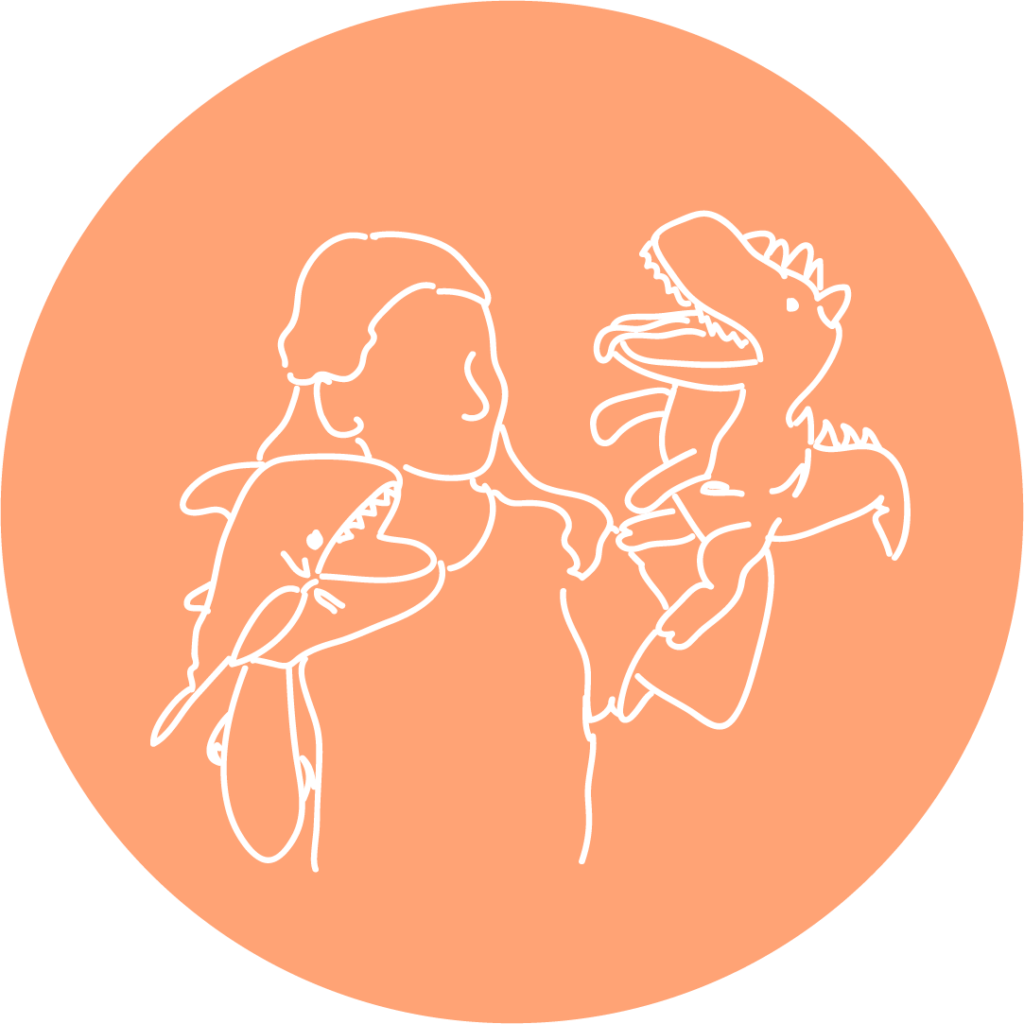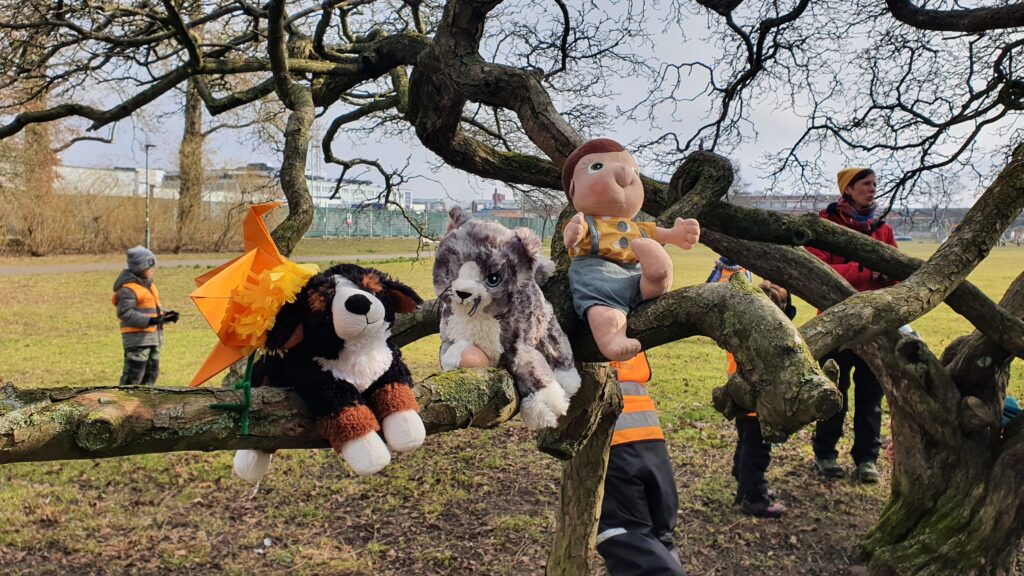Home / THE FRIENDS
Recommended age: 5-7 years
Place: Indoors and/or outdoors
Time required: Ongoing in connection with other methods
Material/tools: Various figures such as dolls and/or cuddly toys
Purpose: Facilitate younger children’s familiarisation with different contexts
Where in the process: Through the whole process

The method is inspired by the organisation SpielRaum.
This method is a good tool for communicating with younger children. Using ‘friends’ such as dolls and/or cuddly toys with different characteristics and needs can shift the focus from the children themselves to the needs and feelings of the friends. It helps children to explore places and identify what features the place needs to make as many people as possible feel included. Friends can be used during a whole process or during a longer activity. Sometimes it can be difficult for children to take the first step during an activity and friends can show the way.
You will need a number of dolls and/or cuddly toys, which you will give different names, characteristics and needs in advance. Below you can see descriptions of the friends we used.
Harry the dog is calm, slow, kind and caring. He likes cosy and quiet environments and to be left alone. He doesn’t like large groups or loud noises. Harry feels safe when it is quiet, when he is sitting on a cosy sofa and everyone is friendly.
Question to raise through Harry’s character: Where would Harry like to be?
Kurre the cat is lively, eager and positive. He likes to climb and run fast. He doesn’t like to sit down or walk slowly. Kurre feels safe when he can run, jump and knows that Daddy Cat is close by.
Question to raise through Kurre’s character: Where would Kurre like to play?
Phoenix the bird is curious, sociable and interested in how things look and work. He wants to get to know people. He likes to sit in tall trees to see things, look at things with a magnifying glass and talk to lots of different characters. They don’t like not getting answers to their questions. Phoenix feels safe in a tree where he can keep an eye on what is happening around him.
Question to raise through the Phoenix character: ‘What does Phoenix see from the tall tree?’
Bobby is an inventive and clever child. He likes to build and modify things and make inventions. Bobby does not like it when someone says: ‘No, you can’t build that’. He feels safe when he can create freely without someone else telling him what to do.
Question to raise through Bobby’s character: Is there anything that Bobby could rebuild to make it better?

To introduce the friends, you can prepare a short and simple puppet show or story with the friends as the main characters. The action should preferably take place in the place you are working on. The aim of the theatre/story is to present all the friends with their characteristics and needs. At the same time, you can use them to introduce and talk about the place the project is about.
Once the friends are presented, they can be used in combination with other methods.
Let the friends start performing a method or ask the children how they think the friends would perform a method.
Impression walk: Ask the children to think about what the phoenix sees from a tree on the site. Ask them to think about where in this place the different friends would or would not like to go.
Photo tagging: Pretend that the friends are going to tag something in the place you are working on. Choose adjectives according to the friends’ characteristics. For example, Phoenix the bird might want to tag the word ‘wow’ on the tallest tree in the place, while Kurre the cat might want to tag the word ‘boring’ on an ordinary park bench.
Pennant walk: Ask the children what they think the different friends are tagging with red or green pennants, or let the friends start by tagging. As above, you can base the friends’ markings on their characteristics.
If you are talking through your friends, speak with empathy. The right tone of voice and mood enhance the characters and also help to capture children’s attention more easily.
This method is best used over a longer period of time when it is important for children to get to know their friends well. In particular, it is useful at the beginning of processes, as it can help anchor the whole project and facilitate communication with children. Over time, it is possible to recognise how much the friends are needed and whether they continue to play a significant role or not.
We use cookies to give you the best experience on our website. If you continue to use this website, you agree to the use of cookies.
Vi använder cookies för att ge dig den bästa upplevelsen på vår hemsida. Om du fortsätter att använda den här webbplatsen godkänner du detta.